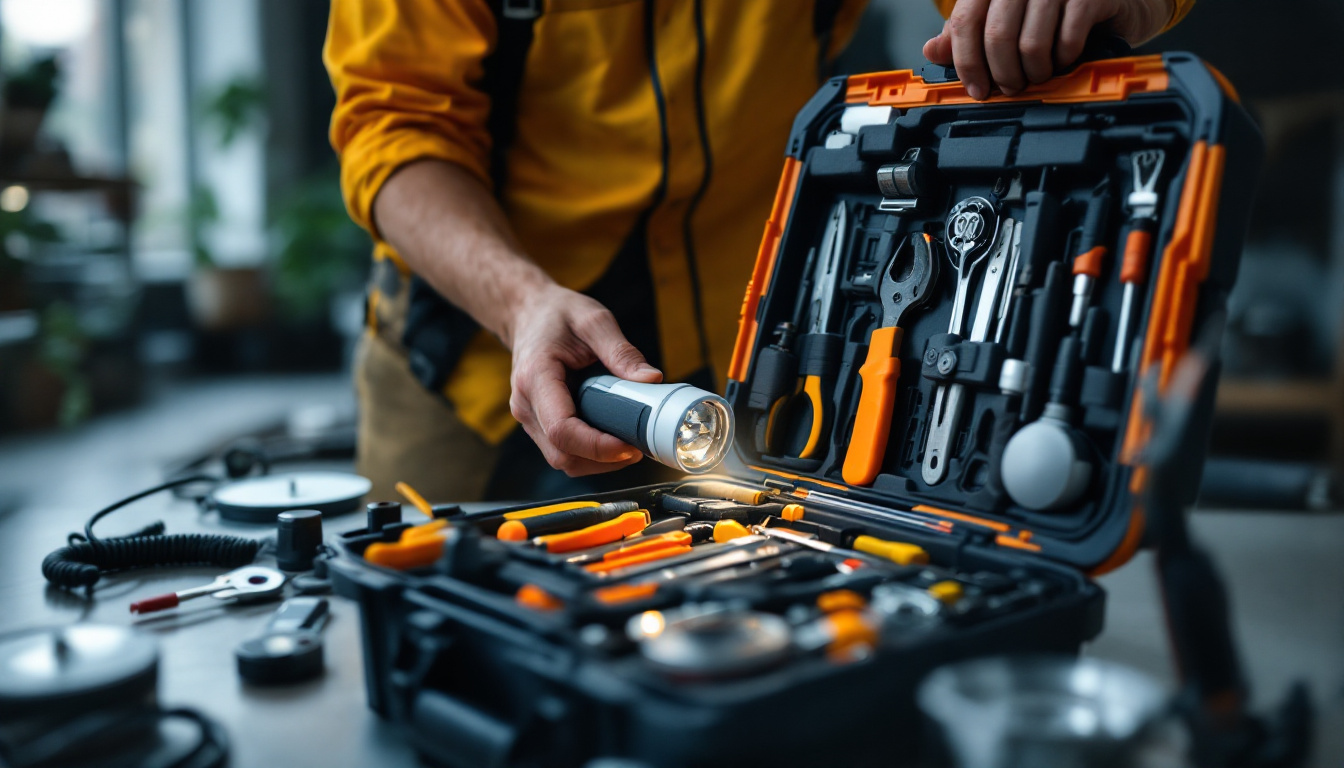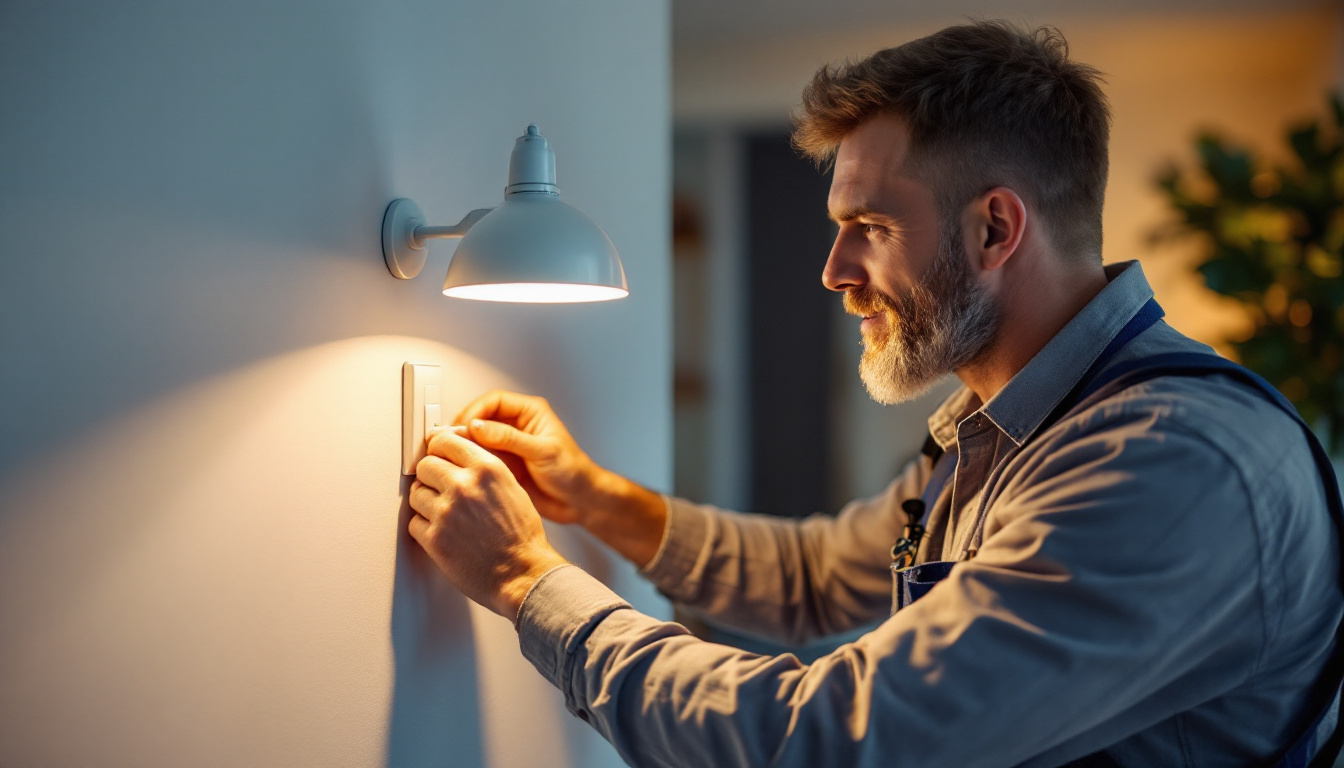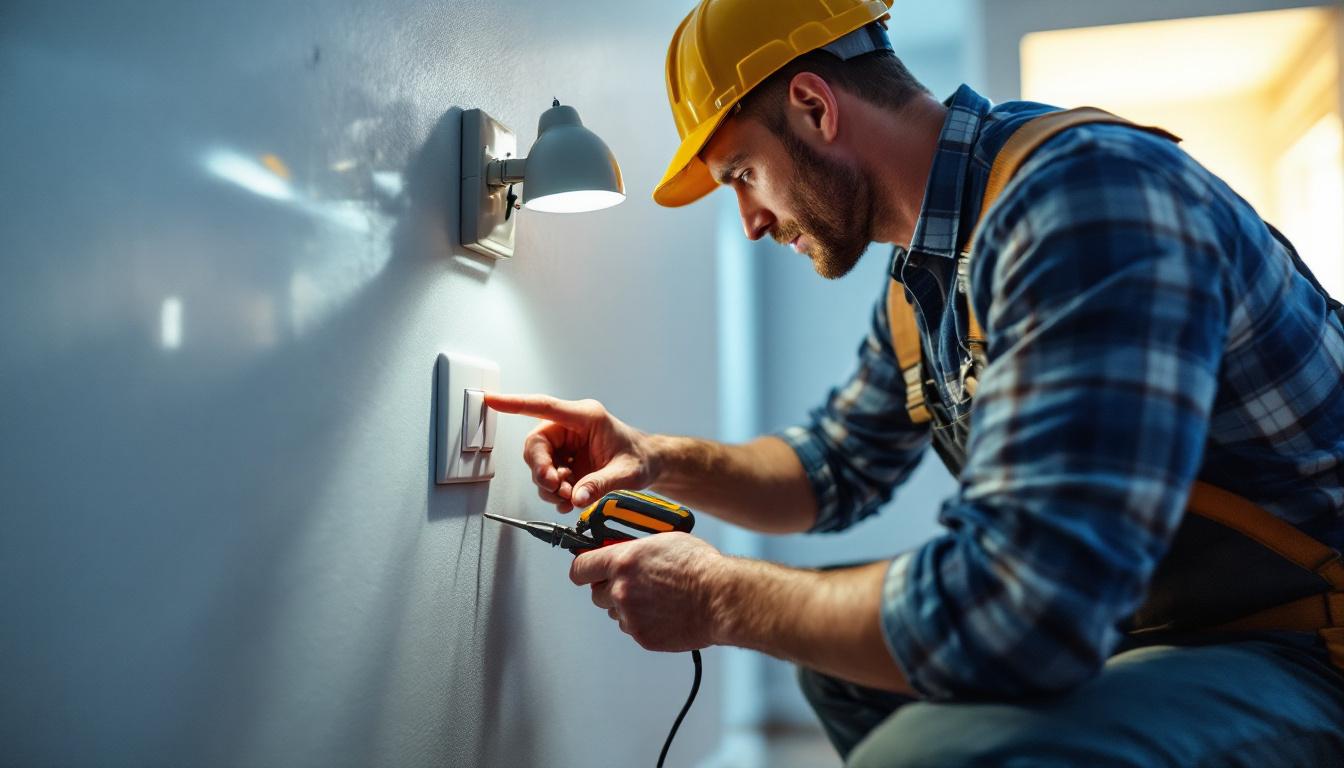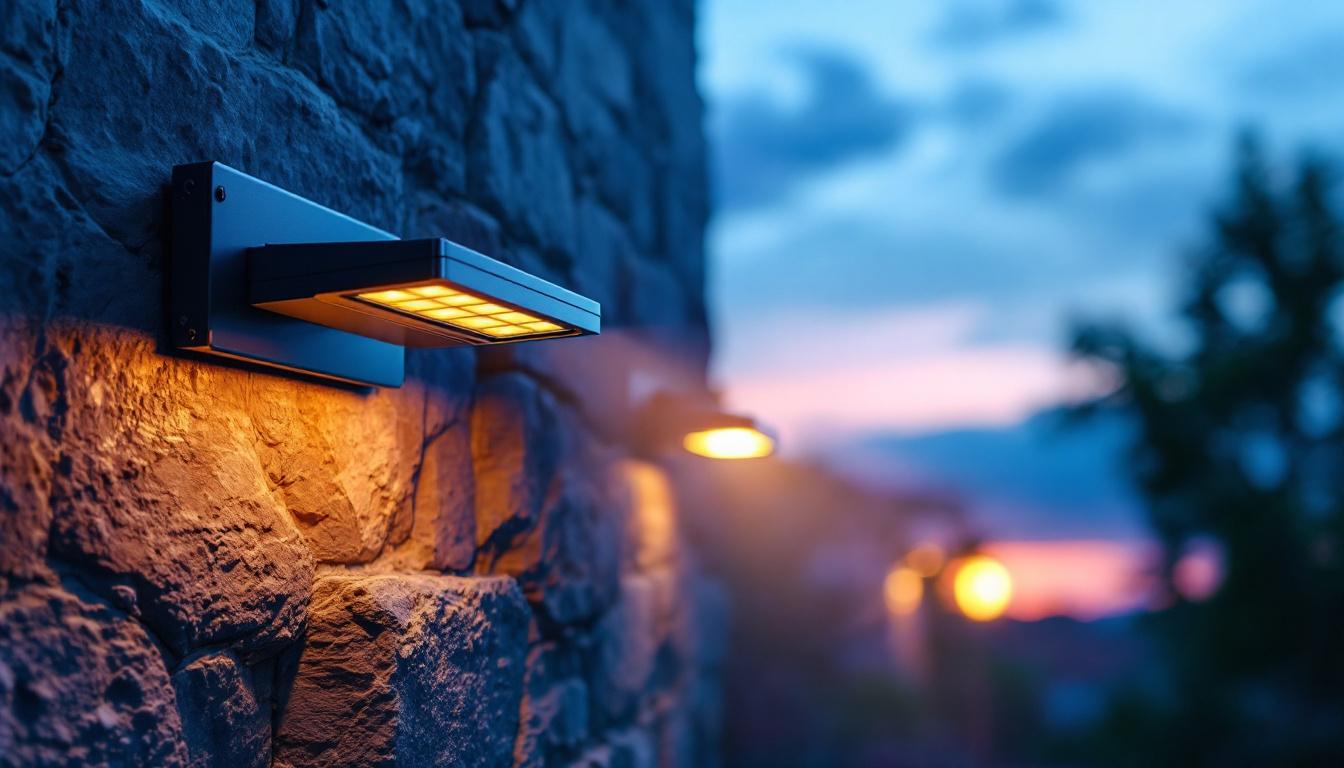
For lighting contractors, ensuring that every project is completed to the highest standards involves meticulous planning and execution. A key aspect of this is the installation and management of plug outlets, which play a crucial role in powering lighting fixtures and other electrical components. This checklist serves as a comprehensive guide for lighting contractors to ensure that all necessary steps are taken to deliver a safe, efficient, and aesthetically pleasing lighting installation.
Before diving into the checklist, it is essential to understand the fundamental aspects of plug outlets. These components are not just simple access points for electricity; they are critical to the overall functionality of any lighting system. Knowing the different types of outlets and their applications can significantly impact the success of a project. Properly installed and selected outlets can enhance energy efficiency and safety, making them a vital consideration in both new constructions and renovations.
Additionally, the placement of plug outlets can influence the usability of a space. For example, in a home office, strategically positioning outlets near desks and workstations can reduce clutter and improve workflow. In contrast, in living areas, outlets should be placed conveniently for easy access to devices like lamps and chargers. Understanding the layout and design of a space can help in determining the optimal number and type of outlets needed.
There are various types of plug outlets available, each designed for specific uses. Standard outlets are commonly found in residential and commercial settings, while specialized outlets, such as GFCI (Ground Fault Circuit Interrupter) and AFCI (Arc Fault Circuit Interrupter), are used in areas where safety is paramount. GFCI outlets are particularly important in wet areas, such as kitchens and bathrooms, where the risk of electrical shock is higher. On the other hand, AFCI outlets are designed to prevent electrical fires by detecting dangerous arcing conditions. Understanding these differences helps in selecting the right outlet for the job, ensuring both safety and functionality.
Moreover, there are also USB outlets that have gained popularity in recent years. These outlets allow for direct charging of devices without the need for a traditional power adapter, making them incredibly convenient for modern households filled with smartphones, tablets, and other electronic devices. As technology continues to evolve, the variety of plug outlets will likely expand, offering even more options to meet the demands of contemporary lifestyles.
When choosing plug outlets, voltage and amperage ratings are critical factors. Most residential outlets operate at 120 volts, but in commercial applications, 240-volt outlets may be necessary. Ensuring that the selected outlet can handle the required amperage is essential to prevent overheating and potential hazards. For instance, high-powered appliances like dryers and ovens often require dedicated 240-volt outlets to function safely and efficiently.
It is also important to consider the total load that will be placed on a circuit. Overloading an outlet can lead to tripped breakers or, worse, electrical fires. Therefore, understanding the wattage of devices that will be plugged in is crucial. Homeowners and contractors alike should familiarize themselves with the National Electrical Code (NEC) guidelines to ensure compliance and safety when installing or upgrading outlets. This knowledge not only protects property but also enhances the longevity of electrical systems.
Preparation is key to a successful installation. Before any physical work begins, several steps must be taken to ensure that the project runs smoothly.
A thorough site assessment is vital. This involves evaluating the existing electrical infrastructure, identifying potential challenges, and determining the optimal locations for plug outlets. Factors such as wall materials, existing wiring, and the layout of the lighting fixtures should all be considered during this phase. Additionally, it is important to check for any local building codes or regulations that may affect the installation. Understanding these requirements can help avoid future complications and ensure compliance with safety standards.
Having the right tools and materials on hand can make a significant difference in the efficiency of the installation process. Essential tools include wire strippers, screwdrivers, voltage testers, and drills. Additionally, ensure that all necessary materials, such as outlets, faceplates, and wiring, are readily available to avoid delays. It may also be beneficial to create a checklist of all items needed for the installation. This not only helps in organizing the work but also minimizes the risk of forgetting critical components that could hinder progress. Furthermore, consider the importance of safety gear, such as gloves and goggles, to protect yourself during the installation process.
Once preparations are complete, the actual installation can begin. This phase requires careful attention to detail and adherence to safety protocols. Ensuring that all tools and materials are on hand can streamline the process and reduce the risk of interruptions, which can lead to oversights or mistakes. It is advisable to lay out all components in an organized manner, allowing for easy access and minimizing the time spent searching for necessary items during the installation.
Safety should always be the top priority when working with electricity. Before starting any installation, ensure that the power is turned off at the circuit breaker. Use voltage testers to confirm that there is no live current present. Wearing appropriate personal protective equipment (PPE) is also essential to safeguard against potential hazards. In addition to gloves and safety goggles, consider using insulated tools, which can provide an extra layer of protection against accidental shocks. Furthermore, it is wise to have a first aid kit readily available and to familiarize yourself with emergency procedures in case of an incident.
When wiring the outlet, it is crucial to follow the manufacturer’s instructions and local electrical codes. Typically, the black wire (hot) connects to the brass terminal, the white wire (neutral) connects to the silver terminal, and the green or bare wire (ground) connects to the green terminal. Properly securing all connections will help prevent electrical failures. Additionally, it is beneficial to use wire nuts to cap off any exposed wire ends, ensuring that they do not come into contact with one another or any conductive surfaces. This extra precaution can significantly reduce the risk of short circuits and enhance the overall safety of the installation.
After the outlet is wired and secured, testing is necessary to ensure proper functionality. Use a voltage tester to check that the outlet is receiving power and that the wiring is correct. This step is essential to identify any potential issues before the project is considered complete. In addition to checking for power, it is advisable to test the outlet with a circuit analyzer, which can provide insights into wiring errors, such as reversed polarity or open grounds. This thorough testing process not only ensures that the installation meets safety standards but also enhances the reliability of the electrical system in the long run. Moreover, documenting the installation process, including any measurements or changes made, can be invaluable for future troubleshooting or upgrades.
Once the installation is finished, several post-installation tasks must be completed to ensure the longevity and safety of the plug outlets.
Proper labeling of outlets is crucial for future maintenance and troubleshooting. Each outlet should be clearly marked to indicate its circuit and purpose. Additionally, documenting the installation process, including any challenges faced and solutions implemented, can be beneficial for future reference.
Conducting a walkthrough with the client is an important final step. This allows the contractor to explain the functionality of the outlets, demonstrate how to use them safely, and address any questions or concerns the client may have. This interaction not only builds trust but also ensures client satisfaction.
Even with careful planning and execution, challenges can arise during the installation of plug outlets. Being prepared to address these issues is essential for a successful project.
In older buildings, existing wiring may not meet current electrical codes or may be in poor condition. In such cases, it may be necessary to upgrade the wiring to ensure safety and compliance. This can involve additional work but is crucial for the integrity of the electrical system.
Sometimes, there may be limited space for installing outlets, especially in tight areas or older structures. In these situations, creative solutions such as using recessed outlets or power strips can help maximize functionality without compromising aesthetics.
Proper maintenance of plug outlets is essential to ensure their longevity and safety. Regular inspections and upkeep can prevent many common issues.
Conducting regular inspections of plug outlets can help identify potential problems before they escalate. Look for signs of wear, such as discoloration, loose connections, or unusual heat. If any issues are detected, addressing them promptly can prevent more significant electrical failures.
Keeping plug outlets clean is also important. Dust and debris can accumulate over time, potentially causing overheating or electrical shorts. A simple cleaning routine, including wiping down outlets with a dry cloth, can help maintain their functionality.
For lighting contractors, a thorough understanding of plug outlets and their installation process is essential for delivering high-quality work. By following this checklist, contractors can ensure that every aspect of the outlet installation is addressed, from initial assessments to post-installation maintenance. This attention to detail not only enhances the safety and functionality of the lighting systems but also contributes to overall client satisfaction.
In an industry where precision and reliability are paramount, having a well-organized checklist can make all the difference. By adhering to best practices and staying informed about the latest trends and technologies, lighting contractors can continue to excel in their field and provide exceptional service to their clients.
Ready to elevate your lighting projects to the next level? LumenWholesale is here to support you with high-quality, spec-grade lighting products at unbeatable wholesale prices. Say goodbye to local distributor markups and hello to our extensive selection that meets the highest industry standards. With free shipping on bulk orders, you can stock up on reliable, high-performance lighting without any hidden fees. Make your next project shine with the best value in lighting—visit Wholesale Lighting at the Best Value and experience the LumenWholesale difference today.

Discover expert insights with our quick tips on lamp switch timers, tailored for lighting contractors.

Discover the essential role of three-way switches for lighting contractors, learn key installation tips, and boost your projects’ efficiency—upgrade your expertise today!.

Discover top resources for mastering solar powered light bars, boosting energy efficiency and sustainability.

Discover essential tips and techniques for lighting contractors to effectively utilize waterproof plugs in outdoor installations.